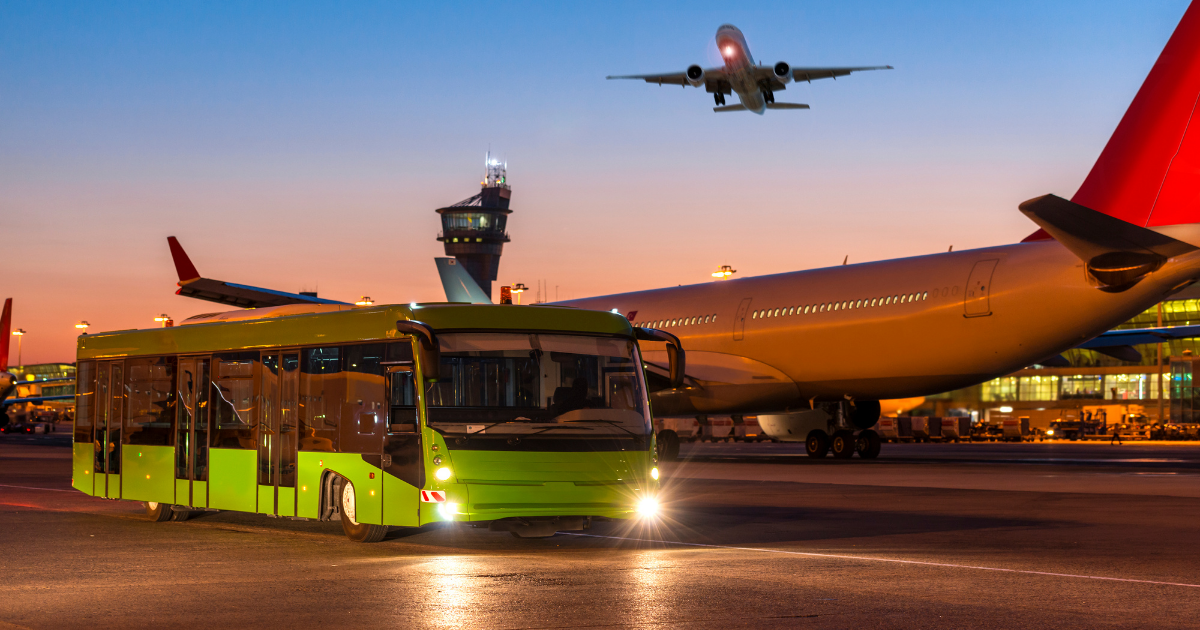
As airports bounce back from 2020’s record-low airline passengers while juggling new operational challenges, as well as passenger and employee expectations for a clean and safe air travel experience, the time for smart airports to take flight is now.
What are Smart Airports?
The term smart airports encompasses the use of connected technologies to optimize airport operations at all levels, whether for a first-time traveler ready to earn their wings, customer service agents updating passengers about delayed flights, or air cargo agents rerouting goods through terminals.
Make no mistake: even though TransLoc is a wheels-on-the-ground company, we love air travel too (ask our 40+ domestic airport customers). Our North Carolina residency would be revoked if we didn’t.
Our focus in this blog post, though, is the ground transportation branch of airport operations and how a single mobility software application in a smart environment can help airport authorities limit the operational impact of two skin-crawling words: congestion and waste.
How are Smart Airports Controlling Congestion?
Global airline passenger numbers are estimated to reach 7.3 billion by 2034. That is 7.3 billion people filling up parking garages, terminal shuttles, and tarmac transfer buses—all of whom are eager to reach their next destination. Convenient access to real-time data that updates passengers on the status of ground transportation services is crucial. Providing this data reduces passenger anxiety and empowers them to make informed, data-driven decisions about their travel plans.
Greenville-Spartanburg International Airport (GSP) in South Carolina exemplifies how our application seamlessly integrates into the connected technologies utilized by smart airports to manage passenger flow. GSP serves an average of 2.61 millions passengers per year, and transporting them across airport grounds is no easy feat. Automated vehicle location and driver-assisted passenger counting allows GSP authorities to monitor surges in use while solar-powered wayside signage proves to be an eco-friendly and efficient way to inform passengers.
Scaling Ground Transportation Without Waste
A rapid influx of airline passengers means airport authorities will scale-up their operations, which includes hiring more airside employees. You probably see where we’re going with this—airside employees who cannot arrive on-time to their worksite will lead to delays in passenger services. Airside employees need the same access to up-to-the-second vehicle location data, stop alerts, and digital wayfinding signage that passengers enjoy.
If your skin is crawling right now, it’s because you know the consequences of airside delays: congestion and waste.
A smart airport does not mean inundating operations with applications and technologies that quickly become out-dated and incompatible. The goal is to deploy a select group of applications that work in concert with each other, and adapt over time together to meet evolving operational demands. In the case of our technology at TransLoc, we offer a single application for airport authorities to manage landside and airside ground transportation. Our application fits into a greater technological ecosystem featuring leading providers of airport ground transportation and parking services. Collaboration and adaptability are smart ways to approach airport ground mobility—and, just like you, we like to work smart.
To provide best-in-class airport ground transportation in a smart environment, airport authorities require world-class partners who can anticipate and plan for the future of airport ground mobility. The future will not wait for anyone, so let’s chat today about how we can bring 21st century solutions to your current landside and airside services.
